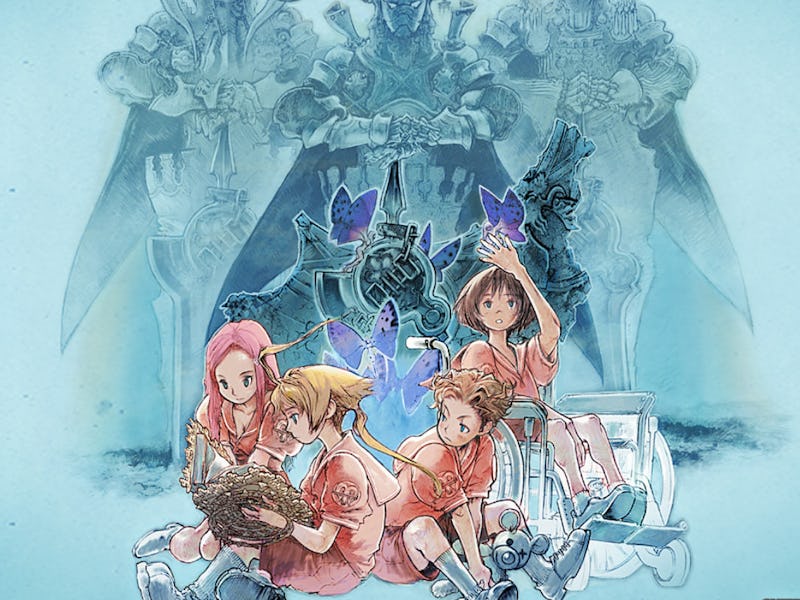20 Years Later, the Most Underrated Final Fantasy Sequel Still Deserves More Credit
There’s more to Final Fantasy Tactics Advance than meets the eye.

If there’s one thing that defines Final Fantasy, it’s that no two games are quite alike. Mechanics and settings change with every release, giving each installment its own unique character. So when the sequel to Final Fantasy Tactics — a game about class struggle, conflict, and the malleability of history — opened with a group of school kids having a snowball fight, it shouldn’t have been too surprising.
Final Fantasy Tactics Advance came to North America on September 8, 2003, six years after Final Fantasy Tactics. In that time, the original game had become a critical darling, and players were already looking forward to a sequel. The game that succeeded the mature RPG couldn’t have looked more like a departure from its predecessor, but the way Final Fantasy Tactics Advance uses its childlike appearance to draw in players and subvert their expectations should garner it a lot more credit.
The moment you start playing Final Fantasy Tactics Advance, you know you’re in for a much different experience than your first foray into Final Fantasy Tactics’ Ivalice — which may be why it doesn’t have quite the cult following of the original. After Final Fantasy Tactics’ introductory cutscene offers a speedy overview of the geopolitics of Ivalice, you’re quickly thrust onto a rain-drenched battlefield fighting for the fate of a successor to the throne. Final Fantasy Tactics Advance instead starts with a snowball fight.
A snowball fight is an unlikely start for a fantasy epic.
Right from the start, Final Fantasy Tactics Advance makes its child characters sympathetic and easy to understand. Marche, the game’s protagonist, has a keen sense of justice and steps in to protect Mewt, a timid boy who’s getting bullied. They’re quickly joined by Ritz, a fierce girl who objects when another boy calls Mewt “a little girl.” In just a few lines of dialogue, Final Fantasy Tactics Advance fleshes out the characters you’ll come to know over the course of many hours.
The schoolyard snowball fight is also how Final Fantasy Tactics Advance ingeniously introduces its combat system. Appearing on the Game Boy Advance and sporting a vibrant, kid-friendly color palette, Final Fantasy Tactics Advance is likely to be many players’ first experience with tactical RPGs, and its low-stakes tutorial is the perfect way to teach players the basics of the genre without being too overwhelming.
Of course, things get a lot more complicated from there. The kids soon meet up with Doned, Marche’s brother, who laments not being able to join the snowball fight because of an unnamed chronic illness. The game starts in earnest when the kids open a mysterious book called the Gran Grimoire, which transforms their town into the fantastical world of Ivalice, drawn from their imaginations and named after their real hometown of St. Ivalice.
The fantasy version of Ivalice is ruled over by a group of Judges, neutral arbiters who oversee battles between the setting’s various clans. This manifests as a set of rules that change for each battle, temporarily outlawing the use of certain items or abilities while rewarding others. It’s another clever innovation for Final Fantasy Tactics Advance that encourages players to mix up their strategy for every fight. The Judges also keep anyone from actually dying in battles they oversee, which provides a handy bumper lane for newcomers to TTRPGs.
Ivalice is a fantasy worth defending for some of Final Fantasy Tactics Advance’s characters.
Getting sucked into a magical world Narnia-style might be a bit hokey, but the blending of reality with fantasy is where Final Fantasy Tactics Advance starts to reveal its hidden depth. Despite its cute graphics and child characters, Final Fantasy Tactics Advance is ultimately a story about power and privilege.
Each of the main characters is transformed in the fantasy version of Ivalice. Ritz leads a clan of bunny-eared Viera away from the cruelty of her classmates. Mewt becomes a prince, receiving adoration rather than bullying. Cured of his illness, Doned becomes an adventurer, no longer left to sit on the sidelines while his friends play. Throughout Final Fantasy Tactics Advance, Marche is on a quest to restore the world to its normal state, returning the group home from Ivalice in the process. But as the one with the fewest worries at home, he’s eventually forced to reckon with the fact that getting his wish to leave Ivalice means returning to a place where his friends struggle against illness, sexism, and oppression in a way that he doesn’t.
Final Fantasy Tactics Advance may lack the depth of Final Fantasy Tactics, but that’s not necessarily a bad thing. The game’s childlike veneer lets it introduce both its mechanical depth and its darker narrative elements tactfully, where a more mature presentation would have marked it as less approachable from the beginning. Final Fantasy Tactics Advance may not be among the most beloved Final Fantasy games, but for offering a gentler introduction to tactical RPGs and subtly political storytelling, it’s worth celebrating.
This article was originally published on